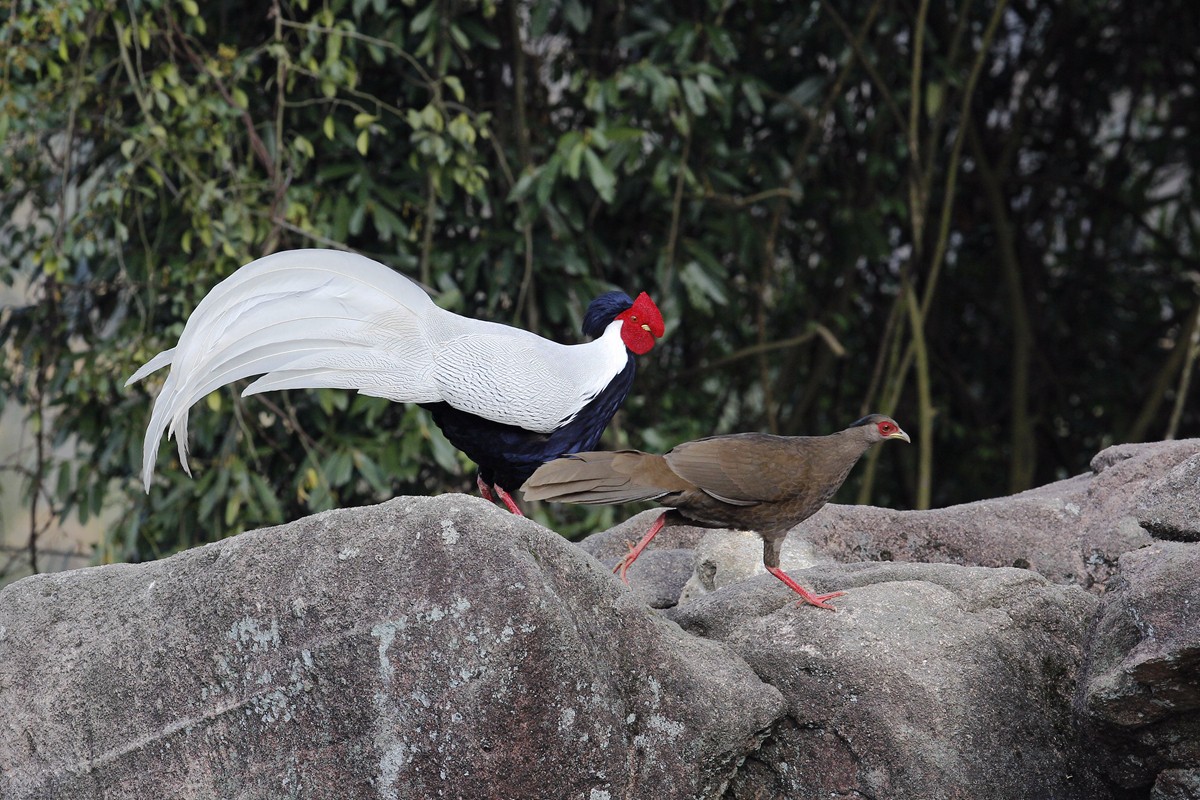Silver Pheasant
A species of Gallopheasants Scientific name : Lophura nycthemera Genus : Gallopheasants
Silver Pheasant, A species of Gallopheasants
Botanical name: Lophura nycthemera
Genus: Gallopheasants
Content
Description People often ask General Info
Description
This is a relatively large pheasant, with males of the largest subspecies having a total length of 120 to 125 cm (47 to 49 in), including a tail up to 75 cm (30 in), while the males of the smallest subspecies barely reach 70 cm (28 in) in total length, including a tail around 30 cm (12 in). The body mass of males can range from 1.13–2.00 kg (2.49–4.41 lb). Females of all subspecies are notably smaller than their respective males, with a size range of 55–90 cm (22–35 in) in total length, including a tail of 24–32 cm (9.4–12.6 in). The body mass of females can range from 1.0–1.3 kg (2.2–2.9 lb). Males of the northern subspecies, which are the largest, have white upperparts and tail (most feathers with some black markings), while their underparts and crest are glossy bluish-black. The males of the southern subspecies have greyer upperparts and tail with extensive black markings, making them appear far darker than the northern subspecies. The adult male plumage is reached in the second year. Females are brown and shorter-tailed than the males. Females of some subspecies have whitish underparts strongly patterned with black, and in L. n. whiteheadi this extends to the upper mantle. 
Size
70 - 125 cm
Life Expectancy
10 years
Nest Placement
Ground
Feeding Habits
Silver Pheasant primarily feeds on plant and animal matter, favoring seeds and fruits from Castanopsis chinensis and other Fagaceae. Silver Pheasant's feeding behaviors include active foraging on the ground, with a unique preference for certain woodland vegetation.
Habitat
Silver Pheasant occupies diverse forest habitats, predominantly in hilly or mountainous regions at elevations usually above 1000 meters. Its favored environments include semi-evergreen and hill evergreen forests, extending into both broadleaf and pine-dominated areas. Additionally, silver Pheasant may inhabit grasslands with adjacent forests, adapting to a range of altitudes from 200 to 450 meters, with a preference for roosting in tall oak trees.
Dite type
Omnivorous
People often ask
General Info
Feeding Habits
Bird food type
Species Status
Not globally threatened.
